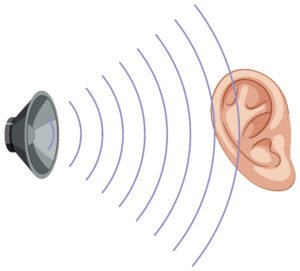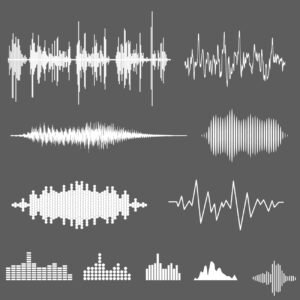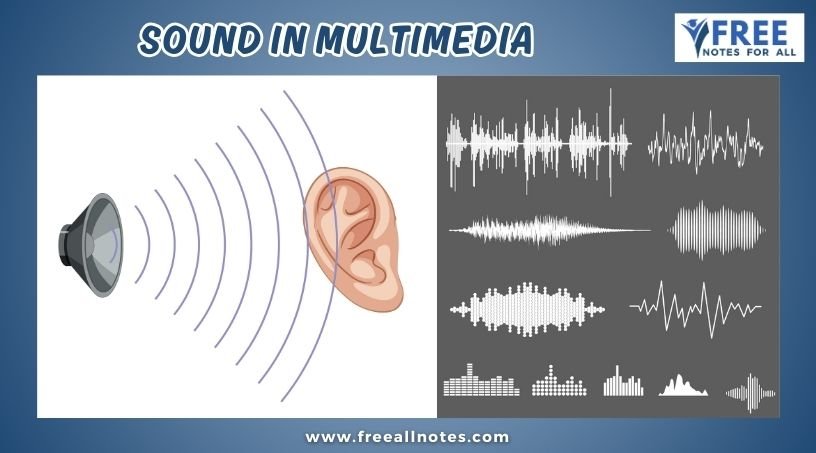Table of Contents
Sound in Multimedia : Definition, Importance and Attributes
Sound in Multimedia

Sound in Multimedia refers to the auditory component of multimedia content, which includes audio elements such as music, sound effects, voiceovers, and ambient sounds. It plays a vital role in enhancing the overall experience of multimedia applications, such as films, video games, presentations, and interactive media. Sound in multimedia serves to convey emotions, provide information, create atmosphere, and engage the audience, making it an essential element in storytelling and user interaction. By integrating sound effectively, multimedia can create a more immersive and impactful experience for users.
Importance of Sound in Multimedia
The importance of sound in multimedia can be summarized through several key points:
- Emotional Impact: Sound has the power to evoke emotions and set the mood for the content. Background music, sound effects, and voiceovers can enhance feelings of excitement, tension, joy, or sadness, making the experience more engaging.
- Information Delivery: Sound can effectively convey information and context. Voiceovers can provide narration in educational videos, while sound cues can indicate actions or events in interactive media, helping users understand and follow the content more easily.
- User Engagement: Well-designed sound can capture and maintain the audience’s attention. Engaging audio elements can make multimedia experiences more enjoyable and memorable, encouraging users to interact with the content.
- Narrative Enhancement: In storytelling, sound complements visuals by adding depth and context. It can highlight key moments, create suspense, or provide background information, enriching the narrative and making it more compelling.
- Brand Identity: Sound can play a significant role in establishing and reinforcing brand identity. Jingles, sound logos, and consistent audio branding can make a brand more recognizable and memorable to consumers.
- Immersion and Realism: In video games and virtual reality, sound contributes to creating a realistic and immersive environment. Spatial audio techniques can simulate real-world soundscapes, enhancing the user’s sense of presence and involvement.
- Accessibility: Sound can improve accessibility for individuals with visual impairments. Audio descriptions and spoken instructions can help make multimedia content more inclusive and navigable for all users.
- Cultural Significance: Sound can convey cultural meanings and associations, enriching the content with cultural references and enhancing the audience’s connection to the material.
Attributes of Sound
Sound is a complex phenomenon characterized by various attributes that define its properties and how we perceive it. Here are the key attributes of sound:

1. Tone
- Definition: Tone refers to the quality or character of a sound that distinguishes it from other sounds. It is influenced by the sound’s harmonic content and timbre.
- Example: The difference in sound between a piano and a violin playing the same note is due to their unique tones.
2. Intensity
- Definition: Intensity is the power carried by sound waves per unit area in a direction perpendicular to that area. It is often perceived as loudness and is measured in decibels (dB).
- Example: A whisper has a lower intensity compared to a shout, which is perceived as much louder.
3. Frequency
- Definition: Frequency is the number of cycles of a sound wave that occur in one second, measured in Hertz (Hz). It determines the pitch of the sound.
- Example: A sound with a frequency of 440 Hz is perceived as the musical note A above middle C.
4. Wavelength
- Definition: Wavelength is the distance between successive crests (or troughs) of a sound wave. It is inversely related to frequency; higher frequencies have shorter wavelengths.
- Example: A low-frequency sound (like a bass drum) has a longer wavelength compared to a high-frequency sound (like a whistle).
5. Pitch
- Definition: Pitch is the perceived frequency of a sound, which allows us to distinguish between high and low sounds. It is closely related to frequency but is a subjective perception.
- Example: A high-pitched sound, like a flute, is perceived as higher in pitch than a low-pitched sound, like a tuba.
6. Amplitude
- Definition: Amplitude refers to the maximum displacement of points on a wave from its rest position. It is related to the intensity or loudness of the sound.
- Example: A sound wave with a larger amplitude will be perceived as louder than one with a smaller amplitude.
7. Timbre
- Definition: Timbre, also known as tone color, is the quality of a sound that allows us to distinguish between different sources of sound, even when they are producing the same pitch and loudness.
- Example: The same note played on a guitar and a piano will sound different due to their unique timbres.
8. Duration
- Definition: Duration refers to the length of time a sound is heard. It can affect how we perceive rhythm and tempo in music.
- Example: A short, staccato note has a different duration compared to a long, sustained note.
9. Envelope
- Definition: The envelope of a sound describes how its amplitude changes over time, typically characterized by four stages: Attack, Decay, Sustain, and Release (ADSR).
- Example: A piano note has a quick attack, a short decay, a sustained sound while the key is pressed, and a quick release when the key is let go.
You May Like to Browers More




